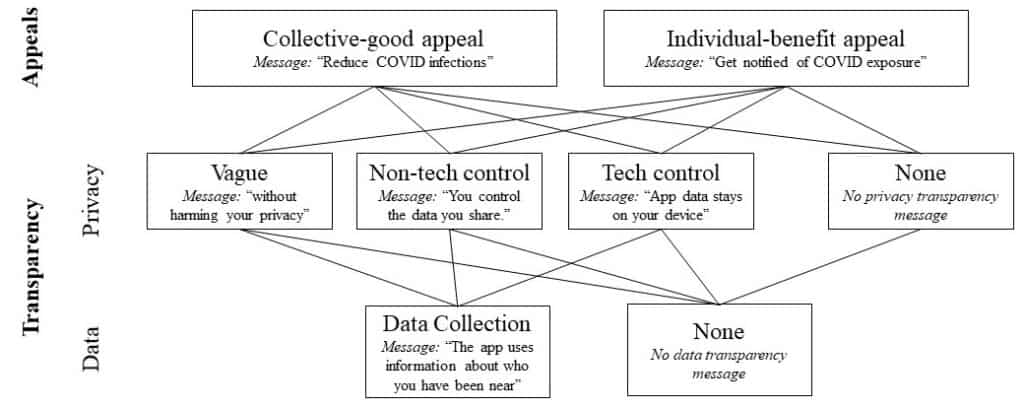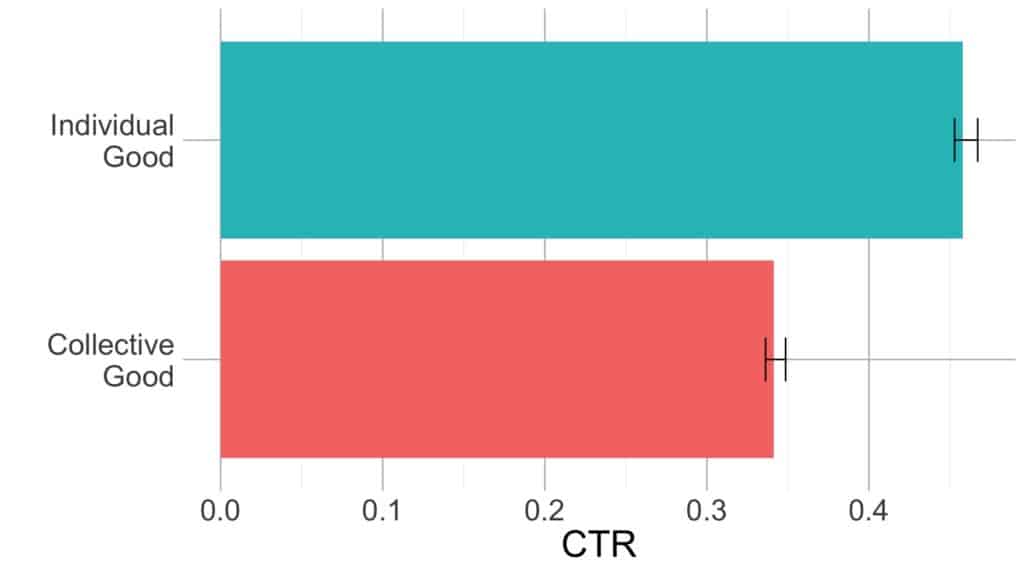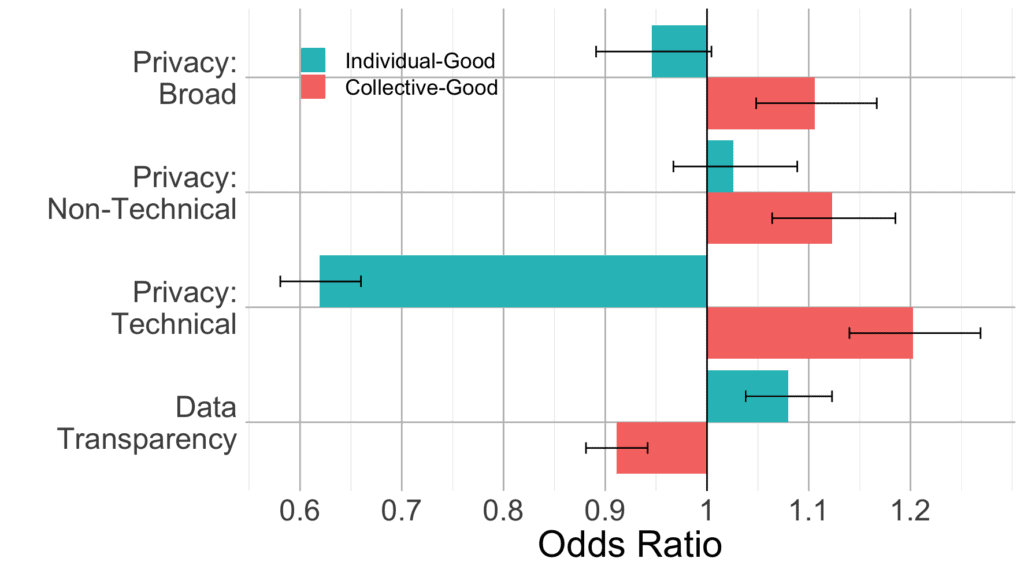Researchers at the Max Planck Institute for Software Systems, University of Maryland, and University of Michigan have released a preprint of a paper titled “Field Evidence of the Effects of Pro-sociality and Transparency on COVID-19 App Attractiveness”.
The researchers helped the Louisiana Department of Public Health run Google Display advertisements for their exposure notification app: CovidDefense. As part of this advertising campaign, the researchers conducted a randomized, controlled trial to evaluate the impact of 1) collective vs individual-good appeals, 2) privacy transparency statements and 3) data collection transparency statements on the CTR of the ads.

They found that a collective-good framing (e.g., Install CovidDefense to reduce COVID infections) was more effective than an individual-good framing (e.g., Install CovidDefense to get notified of COVID exposure).
Additionally, they find that the effect of privacy transparency statements (e.g., app data will stay on your device, you control the data you share) are moderated by the type of appeal used. When a collective-goods appeal is used, this appeal works even better when a privacy transparency statement is added. The authors hypothesize that since prior work suggests higher individual privacy concern in collective settings, salience of individual privacy is already high & privacy statements help reassure users.

The effects of the data transparency statements are also moderated by the type of appeal. However, these effects go in the opposite direction: when a collective-goods appeal is used, the appeal is less effective when paired with information about what data the app collects. The authors hypothesize that reminding people about their individual data donation for the collective may cause potential users to reconsider sharing their data / adopting the app.

Finally, the authors find that demographics influence willingness to install a COVID19 app: men were less likely to click on the CovidDefense ads while people living in rural areas and both young (18-24 years) and older (65+ years) users were more likely to click on the ads.
You can find the paper here: https://osf.io/preprints/socarxiv/gm6js/
You can find the author’s other research here: https://covidadoptionproject.mpi-sws.org/